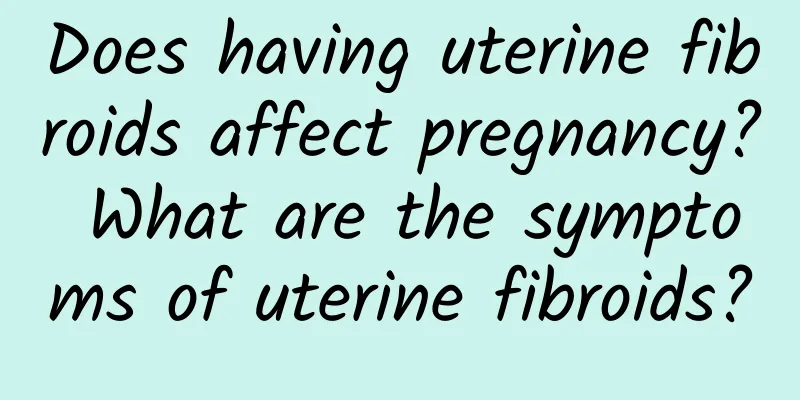What are the symptoms of pelvic inflammatory disease and cervicitis

|
Pelvic inflammatory disease and cervicitis are common gynecological diseases with symptoms including lower abdominal pain, abnormal discharge, and pain during sexual intercourse. Treatments include antibiotics, topical medications, and lifestyle adjustments. 1. Lower abdominal pain: Pelvic inflammatory disease and cervicitis often cause persistent or intermittent pain in the lower abdomen, and the pain may radiate to the waist and back. It is recommended to seek medical attention in time. The doctor will prescribe antibiotics such as cephalosporins, metronidazole or doxycycline according to the condition, and physical therapy to relieve pain if necessary. 2. Abnormal discharge: Patients with cervicitis often have increased vaginal discharge, abnormal color such as yellow or green, or with a strange smell. Pelvic inflammatory disease may be accompanied by purulent discharge. Local medications such as vaginal suppositories such as clotrimazole and metronidazole suppositories can relieve symptoms. At the same time, pay attention to personal hygiene and avoid using irritating washes. 3. Pain during sexual intercourse: Inflammation may cause pain or discomfort during sexual intercourse. Sexual intercourse should be avoided during treatment and resumed after the inflammation subsides. The doctor may recommend the use of anti-inflammatory drugs such as ibuprofen to relieve pain, and psychological counseling to reduce anxiety. 4. Fever and fatigue: Pelvic inflammatory disease may cause fever, chills and general fatigue, indicating a serious infection. You need to seek medical attention promptly. The doctor may use intravenous antibiotics such as ceftriaxone or a combination of drugs to control the infection. At the same time, you should pay attention to rest and nutritional supplements. 5. Urinary discomfort: Some patients may experience frequent urination, urgency, or pain during urination, indicating that the inflammation may affect the urinary system. It is recommended to drink plenty of water and avoid spicy food. The doctor may prescribe antibiotics such as levofloxacin or nitrofurantoin for treatment. Symptoms of pelvic inflammatory disease and cervicitis vary, and timely medical treatment and standardized treatment are key. During treatment, you should pay attention to personal hygiene, avoid fatigue and sexual intercourse, and have regular checkups to ensure that the inflammation has completely subsided and prevent recurrence. |
<<: Can patients with polycystic ovary and amenorrhea drink deer placenta cream?
>>: What are the symptoms of functional uterine bleeding?
Recommend
Family members should know how to care for patients with cervical erosion in advance
Cervical erosion is a common gynecological diseas...
Women should understand the factors that cause cervical hypertrophy
In recent years, the incidence of gynecological d...
What factors can cause symptoms of adnexitis?
Among gynecological diseases, adnexitis is one of...
Do I need to treat cervical erosion? Common treatments for cervical erosion in women
Should I treat cervical erosion? The degree is no...
The Chinese herbal medicine formula of Herba Agrimoniae can effectively treat severe cervical erosion
In addition to actively cooperating with clinical...
Lower abdominal mass is often the main symptom of patients with uterine fibroids
Most patients with uterine fibroids do not have o...
Is adenomyosis serious? How is adenomyosis treated?
Adenomyosis is one of the common gynecological di...
To get rid of obesity, you need to first understand whether it is fat-type obesity or edema-type obesity? Pharmacist Zeng Yizhen teaches 7 principles of exercise
In the hot summer, in order to cool off, women we...
What are the main symptoms of Bartholinitis?
Bartholinitis is a common gynecological inflammat...
What are the dangers of medical abortion?
For women, abortion is a last resort. Any form of...
How to treat cervical erosion by yourself? Pay attention to three aspects of self-regulation of cervical erosion by yourself
Cervical erosion can generally be treated by doin...
Eat apples to lower cholesterol! Key: How to take quercetin?
“An apple a day keeps the doctor away” means that...
What causes multiple uterine fibroids?
What is the cause of multiple uterine fibroids? T...
What should I eat to reduce or eliminate uterine fibroids?
Uterine fibroids are one of the few common gyneco...
5 aerobic exercise demonstrations for postpartum body shaping
Half abdominal curl exercise Effect: Training the...









